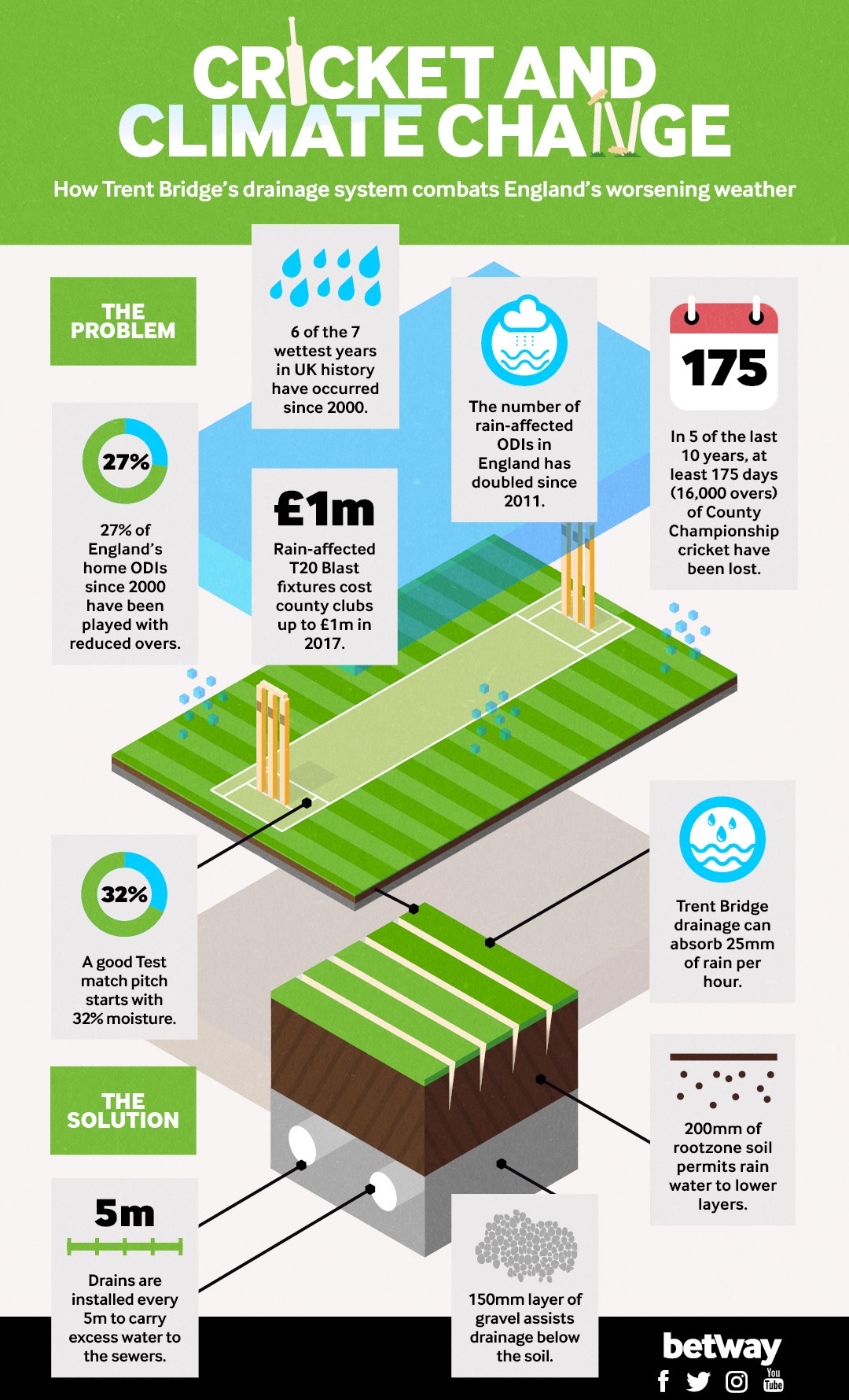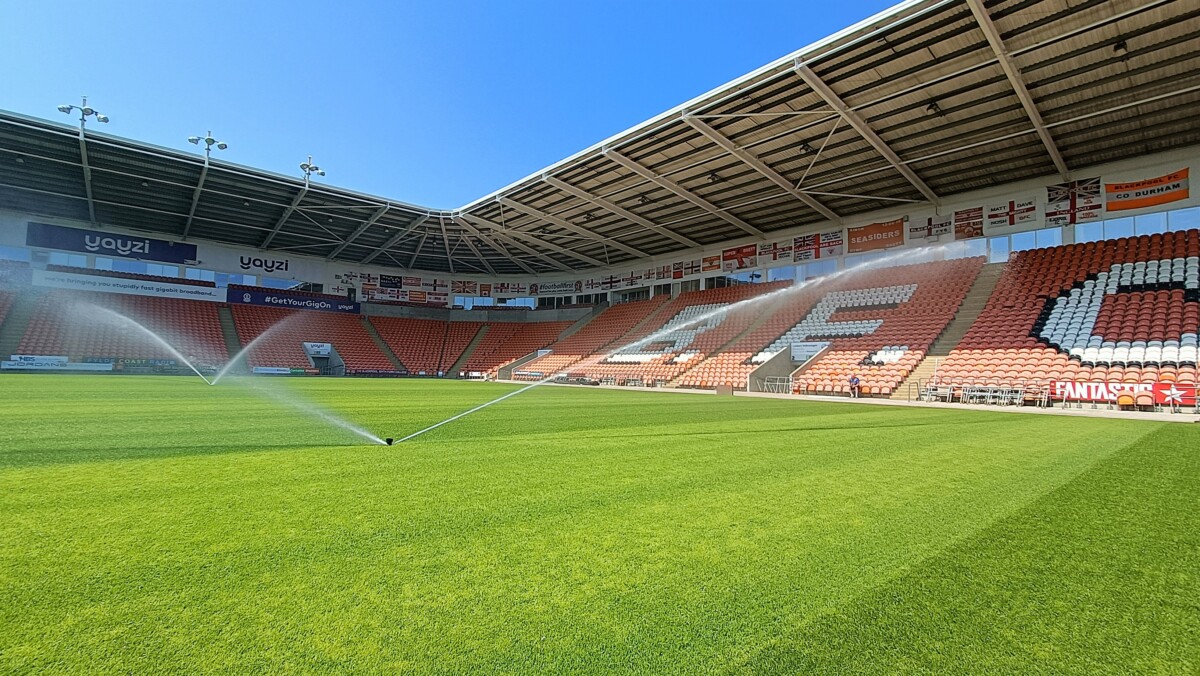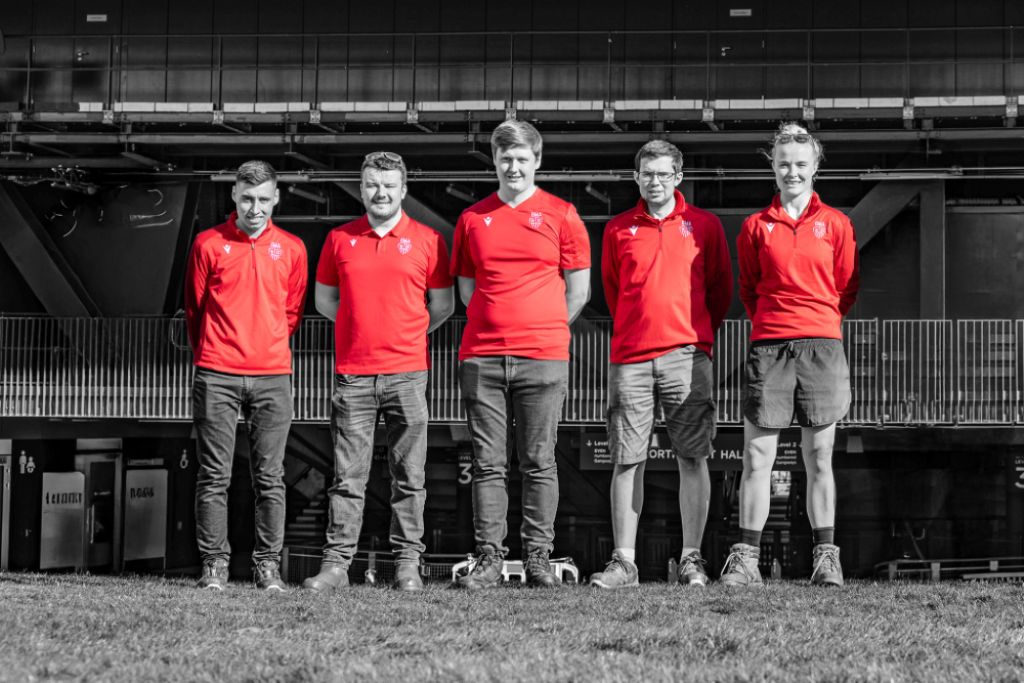Climate Change In Cricket: Cricket has always been a sport at the mercy of the weather.
In the 1930s, county cricket clubs in England were headed for financial ruin after a succession of wet summers. Twenty years later, persistent rain saw desperate clubs experiment with blankets, rubber mats and suction machines.

As recently as the summer of 2012, three of England’s 13 ODIs were abandoned due to rain, while no result was possible in two of their seven Test matches with West Indies and South Africa.
That’s why the sport must take notice of a report published by Climate Coalition, the UK’s largest climate change action group, in February.
The document names cricket as the sport that will be hardest hit by climate change in England, stating that “wetter winters and more intense summer downpours are disrupting the game at every level”.
That was reiterated by Glamorgan Head of Operations Dan Cherry, who warned that climate change could “fundamentally change the game”.
“The less cricket we play, the fewer people will watch it, the less they will come to the ground and pay to enter, the less chance there is for young people to be inspired,” said Cherry.
This change, it seems, has already begun.
In international cricket, 27 per cent of England’s home one-day internationals since 2000 have been played with reduced overs because of rain delays. The rate of rain-affected matches has more than doubled since 2011, with five per cent of matches abandoned completely.
Part of the problem with climate change in England, though, is that it’s not always straightforward to identify.
“In this country, you’re relying on the weather,” says Steve Birks, head groundsman at Nottinghamshire, who are available at 5/2 to win the 2018 County Championship in the latest cricket betting.
“One week it’s 27 degrees, and the next its central-heating weather again. You can’t rely on it being red hot for a week.”
British weather has always been famously unpredictable. Yet Birks, who will prepare the Trent Bridge pitch for England’s Test match with India in August, reveals there are subtle differences now.
“The rain is getting tropical, it is getting heavier,” he says. “We’re getting thunderstorms more often when it rains – I think that’s when you can tell the difference. But then that’s when the new outfield comes into its own.
The new outfield Birks is referring to is the product of a £600,000 grant from the ECB to Trent Bridge – plus the Swalec Stadium and Headingley – to renovate its outfield in 2008, including a new turf surface, drainage and sprinklers.
“The drainage at Trent Bridge is now second only to Lord’s,” he says. “It can take up to 25mm per hour in most places on the square.
“Beforehand, it was just a clay-based outfield with land drains in. Now it’s got a root zone up to 150mm, drains every five metres, and pop-up sprinklers in between drainage. It really takes it away.”
The new drainage system is too efficient, according to ex-England captain Kevin Pietersen, who claimed in 2014 that it resulted in the pitch for England’s Test match with India becoming “dry and lifeless”. He was not the only one, either, with other players and pundits declaring the surface to be slow and unfavourable to entertaining cricket.
Birks apologised at the time but says it had nothing to do with the drainage, which allows the surface to retain as much moisture as is required.
“We knew the 2014 pitch was coming to the end of its life, but it’s trying to fit in when you’re going to dig it up,” he says. “When you dig it up and take it away, you can’t play on it for two years.
“They deal with it in Australia, where the temperatures are twice as hot as here. Last year we mowed the square slightly longer, so that plenty of moisture stays in it.
“Our pitches start with maybe 32 per cent moisture in. That’s plenty.”
Birks understands, however, the extra scrutiny that comes when the national team is in town. “There is a lot more pressure when you’re dealing with England,” he says. “You want the pitch to be fair. Whatever England ask for you try and give them.”
The importance of delivering the right pitch is as much financial as it is tactical. Weather swings have the power to cruelly impact on a country’s finances, while international cricket – especially Test matches – must entertain if it is not to be squeezed out of the cricketing public’s consciousness.
“We lost our first ODI last year because it rained all day,” says Birk. “It’s a massive financial hit, particularly if it’s an ODI.”
Birks says that measures against climate change are likely to increase in years to come, but – for now at least – he is confident that Trent Bridge’s infrastructure can withstand the elements.
“Our new drainage system can take most of the storms we’ve had so far,” he says. “Whatever gets thrown at us, it’s our job to deal with it.”
Click here to read the original article
For the latest industry news visit turfmatters.co.uk/news
Get all of the big headlines, pictures, opinions and videos on stories that matter to you.
Follow us on Twitter for fun, fresh and engaging content.
You can also find us on Facebook for more of your must-see news, features, videos and pictures from Turf Matters.



























